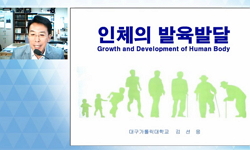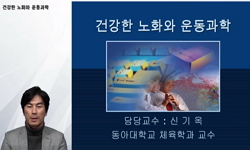본 연구의 목적은 성인의 성, 연령, 운동변화단계에 따른 신체활동, 운동심상, 의사결정균형 그리고 운동 자기효능감의 차이를 확인하고, 신체활동을 예측하는데 있어 운동심상, 의사결정균...
http://chineseinput.net/에서 pinyin(병음)방식으로 중국어를 변환할 수 있습니다.
변환된 중국어를 복사하여 사용하시면 됩니다.
- 中文 을 입력하시려면 zhongwen을 입력하시고 space를누르시면됩니다.
- 北京 을 입력하시려면 beijing을 입력하시고 space를 누르시면 됩니다.

성인들의 신체활동과 관련된 운동심상, 의사결정균형, 운동 자기효능감 = Adults` Physical Activity and Relationship with Exercise Imagery, Decisional Balance, and Exercise Self Efficacy
한글로보기https://www.riss.kr/link?id=A106552850
- 저자
- 발행기관
- 학술지명
- 권호사항
-
발행연도
2012
-
작성언어
-
- 주제어
-
KDC
600
-
등재정보
KCI등재
-
자료형태
학술저널
- 발행기관 URL
-
수록면
217-228(12쪽)
-
KCI 피인용횟수
18
- 제공처
-
0
상세조회 -
0
다운로드
부가정보
국문 초록 (Abstract)
본 연구의 목적은 성인의 성, 연령, 운동변화단계에 따른 신체활동, 운동심상, 의사결정균형 그리고 운동 자기효능감의 차이를 확인하고, 신체활동을 예측하는데 있어 운동심상, 의사결정균형 그리고 운동 자기효능감이 유의하게 작용하는지 여부를 밝히고자 하였다. 총 426명(남자 : 198명, 여자 : 228명, 평균연령 = 31.02세)의 성인들을 대상으로 운동심상 검사지, 의사결정균형 검사지, 운동 자기효능감 검사지, 주간 운동수준 질문지를 사용하였으며, 기술통계, 탐색적 요인분석, 신뢰도 검증, 변량분석, 상관분석, 중다회귀분석을 실시하였다. 분석결과, 성, 연령, 운동변화단계에 따라 운동심상, 의사결정균형, 운동 자기효능감, 신체활동에 유의한 차이를 보였다. 또한, 신체활동을 설명하는 예측인자로서 외형-건강 심상이 23.7%로 가장 높은 설명력을 보였으며, 그 다음으로 운동 자기효능감 17.6%, 운동기분 심상 12.6%, 운동장애 11.9%의 순으로 나타났다. 신체활동을 예측하는데 있어 본 연구에서 적용한 모든 변인들의 전체적인 설명력은 23.1%로 나타났다. 성인의 신체활동을 증가시키기 위한 전략은 그들이 가지고 있는 운동심상과 운동 자기효능감을 극대화하고 운동장애를 최소화하는데 초점을 맞추어야 할 것이다.
다국어 초록 (Multilingual Abstract)
The purposes of this study were to identify the differences among physical activity, exercise imagery, decisional balance and exercise self efficacy by sex, age, stages of change, and to investigate the relationship of physical activity with exercise ...
The purposes of this study were to identify the differences among physical activity, exercise imagery, decisional balance and exercise self efficacy by sex, age, stages of change, and to investigate the relationship of physical activity with exercise imagery, decisional balance and exercise self efficacy. A total of 426 adults (male : 198, female : 228, Mean age = 31.02 years) were voluntarily participated in the study. Korean exercise imagery inventory, decisional balance for exercise scale, exercise self-efficacy scale, and weekly leisure-time exercise questionnaire were used to measure the study's variables. Results indicated that there were significant differences in exercise imagery, decisional balance, exercise self efficacy, and physical activity by sex, age, and the exercise stages. Twenty-three percent of the total study variables accounted for physical activity (R2 = .23) and of the study's variables, appearance-health imagery (B = 23.7) had the strongest effect on physical activity. In addition, the results indicated that exercise self-efficacy, exercise feeling imagery, and exercise cons had a statistically substantial linear relation with physical activity (B = .176, .126, and .119, respectively). The current study implies that the development of better exercise interventions for adults should be aimed at maximizing exercise imagery and self-efficacy and minimizing exercise cons.
참고문헌 (Reference)
1 원형중, "한국판 운동 심상 검사지 타당성 연구" 한국체육학회 51 (51): 131-142, 2012
2 전혜자, "장애인의 운동행동 변화단계와 운동의사결정균형" 한국여성체육학회 19 (19): 103-117, 2005
3 최성범, "운동행동변화단계별 노인의 변화과정, 의사결정균형 및 자아효능감의 관계" 한국사회체육학회 (29) : 661-672, 2007
4 최만식, "운동참여자들의 운동심상, 자기효능감이 운동행동에 미치는 영향" 한국체육과학회 20 (20): 455-467, 2011
5 김병준, "운동심리학 : 이해와 활용" 무지개사 2006
6 김선진, "운동발달의 이해" 서울대학교출판부 2003
7 유재구, "신체이미지 자각과 스포츠참여의 자아존중감을 통한 상호영향력 검증" 한국사회체육학회 (42) : 1343-1354, 2010
8 박재현, "범이론적 변화모형의 타당도" 한국체육대학교 대학원 2001
9 김덕진, "댄스스포츠 참여자의 의사결정균형, 운동동기, 몰입 및 지속의도간의 인과 관계" 한국사회체육학회 (42) : 1295-1308, 2010
10 김명수, "대학생의 운동행동변화과정이의사결정균형과 자기효능감에 미치는 영향" 한국스포츠심리학회 17 (17): 155-166, 2006
1 원형중, "한국판 운동 심상 검사지 타당성 연구" 한국체육학회 51 (51): 131-142, 2012
2 전혜자, "장애인의 운동행동 변화단계와 운동의사결정균형" 한국여성체육학회 19 (19): 103-117, 2005
3 최성범, "운동행동변화단계별 노인의 변화과정, 의사결정균형 및 자아효능감의 관계" 한국사회체육학회 (29) : 661-672, 2007
4 최만식, "운동참여자들의 운동심상, 자기효능감이 운동행동에 미치는 영향" 한국체육과학회 20 (20): 455-467, 2011
5 김병준, "운동심리학 : 이해와 활용" 무지개사 2006
6 김선진, "운동발달의 이해" 서울대학교출판부 2003
7 유재구, "신체이미지 자각과 스포츠참여의 자아존중감을 통한 상호영향력 검증" 한국사회체육학회 (42) : 1343-1354, 2010
8 박재현, "범이론적 변화모형의 타당도" 한국체육대학교 대학원 2001
9 김덕진, "댄스스포츠 참여자의 의사결정균형, 운동동기, 몰입 및 지속의도간의 인과 관계" 한국사회체육학회 (42) : 1295-1308, 2010
10 김명수, "대학생의 운동행동변화과정이의사결정균형과 자기효능감에 미치는 영향" 한국스포츠심리학회 17 (17): 155-166, 2006
11 김영호, "대학생들의 운동행동변화의 단계에 영향을 주는 심리적 변인" 한국스포츠심리학회 15 (15): 18-50, 2004
12 최만식, "대학생 운동참여자들의 동기와 심상의 관계" 한국사회체육학회 (44) : 697-708, 2011
13 원무제, "그림으로 쉽게 배우는 통계분석" 박영사 2007
14 Ouellette, J. A., "Using images to increase exercise behavior : Prototype versus possible selves" 31 : 610-620, 2005
15 Prapavessis, H., "Understanding exercise behavior among new zealand adolescents: A test of the transtheoretical model" 35 : 17-27, 2004
16 Kim, Y. H., "Understanding exercise behavior among Korean adults: A test of the transtheoretical model" ROUTLEDGE JOURNALS 13 : 295-303, 2006
17 Hall, C., "The motivational function of ental imagery for participation in sport and exercise, In Exercise addiction: Motivation for participation in sport and exercise" British Psychological Society 17-23, 1995
18 Felz, D. L., "The effects of mental practice on motor skill learning and performance : A meta-analysis" 5 : 25-57, 1983
19 Lox, C., "The Psychology of Exercise : Integrating Theory and Practice" Holcomb-Hathaway 2006
20 Gammage, K. L., "Self-presentation in exercise contexts : Differences between high and low frequency exercisers" 34 : 1-15, 2004
21 Bandura, A., "Self-efficacy: The exercise and control" W. H. Freeman 1997
22 Vealey, R. S., "Seeing is believing: Understanding and using imagery in sport, In Applied sport psychology: Personal growth to prek performance" Mayfield Publishing Co 247-283, 2001
23 Rodgers, W. M., "Relations among exercise imagery, self-efficacy, exercise behavior, and intentions. Imagination, Cognition" 21 : 55-65, 2001
24 Shin, Y. H., "Psychometric evaluation of the exercise Self-Efficacy Scale among Korean adults with chronic diseases" 24 : 68-76, 2001
25 Nigg, C. R., "Processes of Exercise Behavior Change: Redeveloping the Scale" 1999
26 Sallis. J. F., "Predictors of adoption and maintenance of physical activity in a community sample" 15 : 331-341, 1986
27 U.S Department of Health and Human Services, "Physical activity and fitness. In Healthy People 2010"
28 Munroe-Chandler, K. J., "Now see this : A new vision of exercise imagery" 33 : 201-205, 2005
29 Aiken, L. S., "Multiple regression: testing and interpreting interactions" Sage 1991
30 Gammage, K. L., "More about exercise imagery" 14 : 348-359, 2000
31 Holmes, E. A., "Mental Imagery and Emotion in Treatment across Disorders : Using the Exemple of Depression" 38 : 21-28, 2009
32 Glyn, C. R., "Learning experiences in sport psychology" Human Kinetics 1999
33 Cumming, J., "Investigation the relationship between exercise imagery, leisure-time exercise behavior, and self-efficacy" 20 : 184-198, 2008
34 Rhodes, R. E., "Investigation multiple components of attitude, subjective norm, and perceived control : An examination of the theory of planned behavior in the exercise domain" 42 : 129-146, 2003
35 Hall, C. R., "Imagery in sport and exercise. In Handbook of research on sport psychology" Wiley 529-549, 2001
36 Morris, T., "Imagery in Sport. Champaign" Human Kinetics 2005
37 Andersson, E. K., "Imagery and implementation intention : A randomised controlled trial of interventions to increase exercise behaviour in the general population" 12 : 63-70, 2011
38 Utay, J., "Guided imagery as an effective therapeutic technique : a brief review of its history and efficacy research" 33 : 40-43, 2006
39 Giacobbi, P. R., Jr., "Further developments in the measurement of exercise imagery : The exercise imagery inventory" 9 (9): 251-266, 2005
40 Short, S. E., "Exercise imagery and the stages of change" 28 : 61-78, 2004
41 Thogersen-Ntoumani, C., "Exercise imagery and its correlates in older adults" 13 : 19-25, 2012
42 Penedo, F. J., "Exercise and well-being : a review of mental and physical health benefits associated with physical activity" 18 : 189-193, 2005
43 Hausenblas, H. A., "Exercise Imagery : Its nature and measurement" 11 : 171-180, 1999
44 Giacobbi, P. R., Jr., "Even more about exercise imagery : A grounded theory of exercise imagery" 15 : 160-175, 2003
45 Abbott, A., "Eliminating the dichotomy between theory and practice in talent identification and development : considering the role of psychology" 22 : 395-408, 2004
46 Lee, G. H., "Effect of guided imagery program on patients depression and anxiety receiving cancer chemotherapy" 13 : 125-134, 2004
47 Janis, I. L., "Decision-making: A Psychological Analysis of Conflict, Choice and Commitment" Free Press 1977
48 Hayes, D., "Concern with Appearance, Health Beliefs and Eating Habits" 28 : 120-130, 1987
49 Sparling, P. B., "College physical education ana unrecognized agent of change in combating inactivity related diseases" 46 : 579-587, 2003
50 Tiggemann, M., "Body Image Axross the Life Span in Adult Women : The Role of Self-Objectification" 37 : 243-253, 2001
51 Stanley, D. M., "Are we having hun yet? Testing the effects of imagery use on the affective and enjoyment responses to acute moderate exercise" 11 : 582-590, 2010
52 Cumming, J., "Are Images of Exercising Related to Feeing States?" 4 : 1-21, 2009
53 Cardinal, B. J., "Application of the transtheoretical model of behavior change to preadolescent's physical activity and exercise behavior" 10 : 69-80, 1998
54 Godin, G., "A simple method to assess exercise behavior in the community" 10 : 141-146, 1985
55 Rhodes, R. E., "A multicomponent model of the theory of planned behavior" 11 : 119-137, 2006
56 Ross-Stewart, L., "A Narrative Review of the Relationships among Imagery, Exercise, and Self-Efficacy" 5 : 1-29, 2010
57 문화체육관광부, "2010년도 국민생활체육참여 실태조사" 문화체육관광부 2011
58 U.S Department of Health and Human Services, "2008 Physical Activity Guideline for American" Government Printing Office 2008
동일학술지(권/호) 다른 논문
-
성인들의 건강관련 삶의 질을 예측하기 위한 심리적변인의 통합적 접근
- 한국체육학회
- 이학권(HakGweonLee)
- 2012
- KCI등재
-
- 한국체육학회
- 최관용(KwanYongChoi)
- 2012
- KCI등재
-
- 한국체육학회
- 박광진(KwangJinPark)
- 2012
- KCI등재
-
- 한국체육학회
- 조상우(SangWooCho)
- 2012
- KCI등재
분석정보
인용정보 인용지수 설명보기
학술지 이력
| 연월일 | 이력구분 | 이력상세 | 등재구분 |
|---|---|---|---|
| 2022 | 평가예정 | 계속평가 신청대상 (등재유지) | |
| 2017-01-01 | 평가 | 우수등재학술지 선정 (계속평가) | |
| 2013-01-01 | 평가 | 등재학술지 유지 (등재유지) |  |
| 2010-01-01 | 평가 | 등재학술지 유지 (등재유지) |  |
| 2008-01-01 | 평가 | 등재학술지 유지 (등재유지) |  |
| 2006-01-01 | 평가 | 등재학술지 유지 (등재유지) |  |
| 2003-01-01 | 평가 | 등재학술지 선정 (등재후보2차) |  |
| 2002-01-01 | 평가 | 등재후보 1차 PASS (등재후보1차) |  |
| 2001-01-01 | 평가 | 등재후보학술지 선정 (신규평가) |  |
학술지 인용정보
| 기준연도 | WOS-KCI 통합IF(2년) | KCIF(2년) | KCIF(3년) |
|---|---|---|---|
| 2016 | 1.34 | 1.34 | 1.4 |
| KCIF(4년) | KCIF(5년) | 중심성지수(3년) | 즉시성지수 |
| 1.44 | 1.45 | 1.24 | 0.33 |




 KISS
KISS






